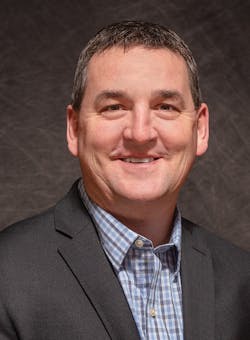THE CITY OF Waukesha Water Utility is tackling a huge water supply challenge. “Our community is in southeastern Wisconsin near the Great Lakes but outside of the Great Lakes Basin watershed,” says general manager Daniel S. Duchniak, P.E. “Waukesha’s primary water supply, a deep aquifer, has severely declined. Our water quality has deteriorated with radium levels exceeding federal drinking water standards.” A report issued before Duchniak’s 2003 arrival concluded that Waukesha should examine alternatives to its current water supply.
“I helped oversee investigations, which concluded our only reasonable water supply alternative is Lake Michigan water,” he adds.
Waukesha worked with the State of Wisconsin to ensure that the 2005 agreement among the Great Lakes governors and Canadian premiers to create the Great Lakes Compact included provisions allowing the city to apply for Lake Michigan water. “In 2010, we applied for Great Lakes water under an exception to the diversion ban established by the Compact,” notes Duchniak. “Our application—which includes the return of approximately 100% of the volume of water we borrow—was exhaustively reviewed by the 10 Great Lakes governors and premiers. We received unanimous approval from the Great Lakes governors in June 2016.”
Waukesha is the first community permitted to access water under the Compact’s exception for communities in counties that straddle the Great Lakes Basin divide that have no reasonable water supply alternatives to Great Lakes water. Duchniak was responsible for overseeing and coordinating the application through six years of regulatory review and approval. “Once approval was received, our team also negotiated a contract with the City of Milwaukee that will save our customers millions of dollars per year in capital and operating costs compared to other suppliers. I continue to oversee planning, design, and permitting of the water supply project, dubbed the Great Water Alliance. Construction is expected to begin in 2020, with transition to the new water supply in 2023.”
What He Does Day to Day
That there is no typical day in this line of work is why he loves the job so much, says Duchniak. “From the people I work with here at the utility to the residents we serve, there are always issues related to projects or services that need to be addressed. Our dedicated team of incredible people is always willing to go the extra mile. Whether it’s a water main break, loss of service, or any other customer issue, we are here to serve our community. That is what makes this job so interesting and rewarding.”
What Led Him to This Line of Work
Duchniak earned a B.S. degree from the University of Wisconsin-Milwaukee in municipal and transportation engineering and an M.S. degree from Marquette University in environmental engineering with an emphasis on water and wastewater treatment. “I was always good at math and science, so I decided to go into engineering,” he says. “I liked to be able to build things and see what I had done. I quickly saw that civil engineering offered me that opportunity. I then trended towards municipal engineering with roads and traffic control. Once graduated, I had the opportunity to work at a water and wastewater utility. I found I really enjoyed that work. It offered me the opportunity to use my math and science skills while working with facilities and treatment processes where I could see the outcome of my work.”
What He Likes Best About His Work
“I like that I get to use my skills in engineering, knowing the work I do will benefit local residents for generations to come,” says Duchniak. “They will have the security of a safe, sustainable water supply they can rely on, be it for drinking or firefighting. They will also know it will be collected, treated, and discharged in a safe manner.”
His Biggest Challenge
“Our program will provide and return Great Lakes water in a manner that will improve the environment and protect the Great Lakes for the long term,” says Duchniak. “Our challenge is to accomplish this in a way that keeps the rates reasonable for all of our residential and industrial customers and minimize disruptions in communities that our pipelines must go through. Overall, it is a $286 million project.”
